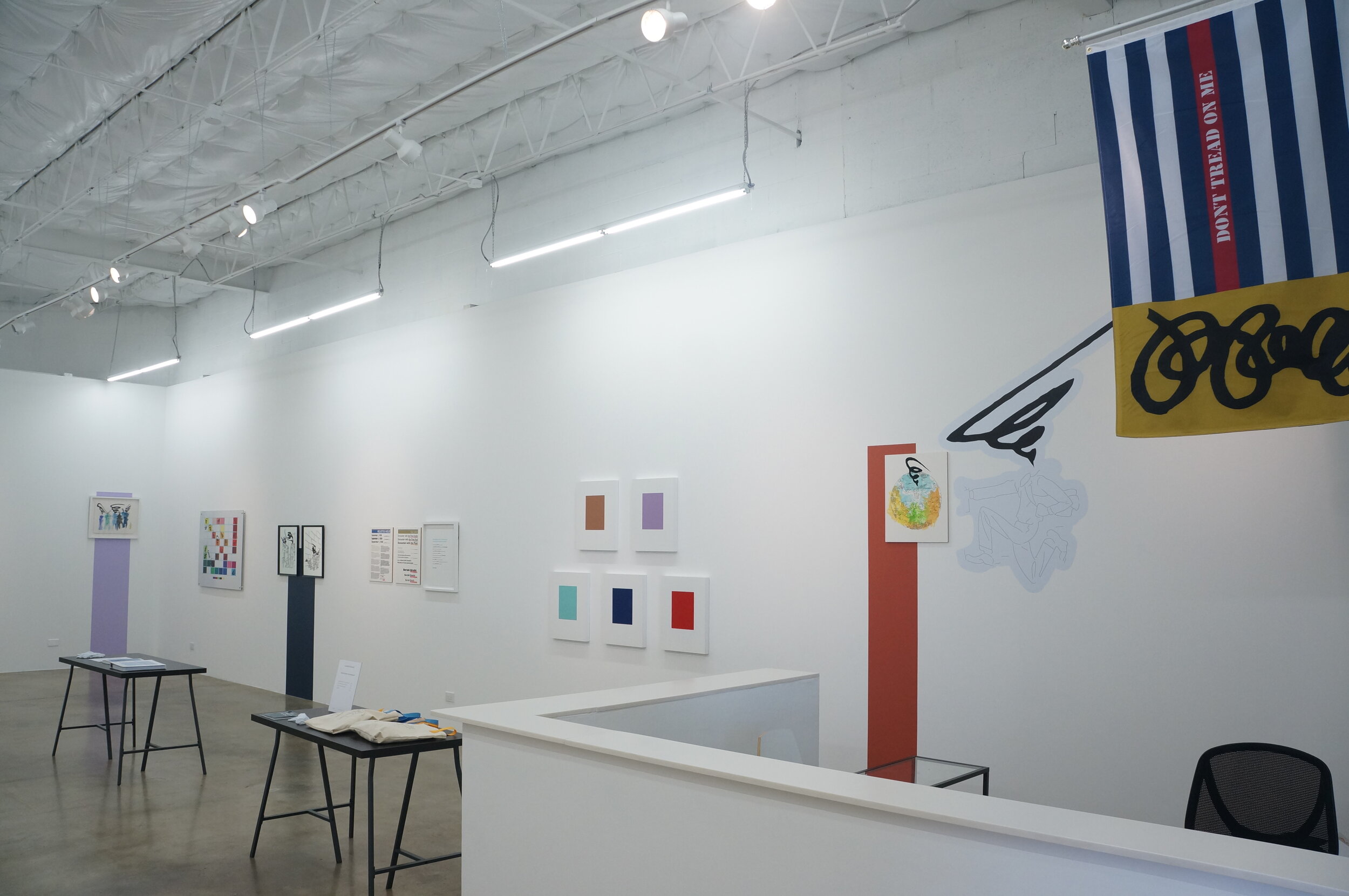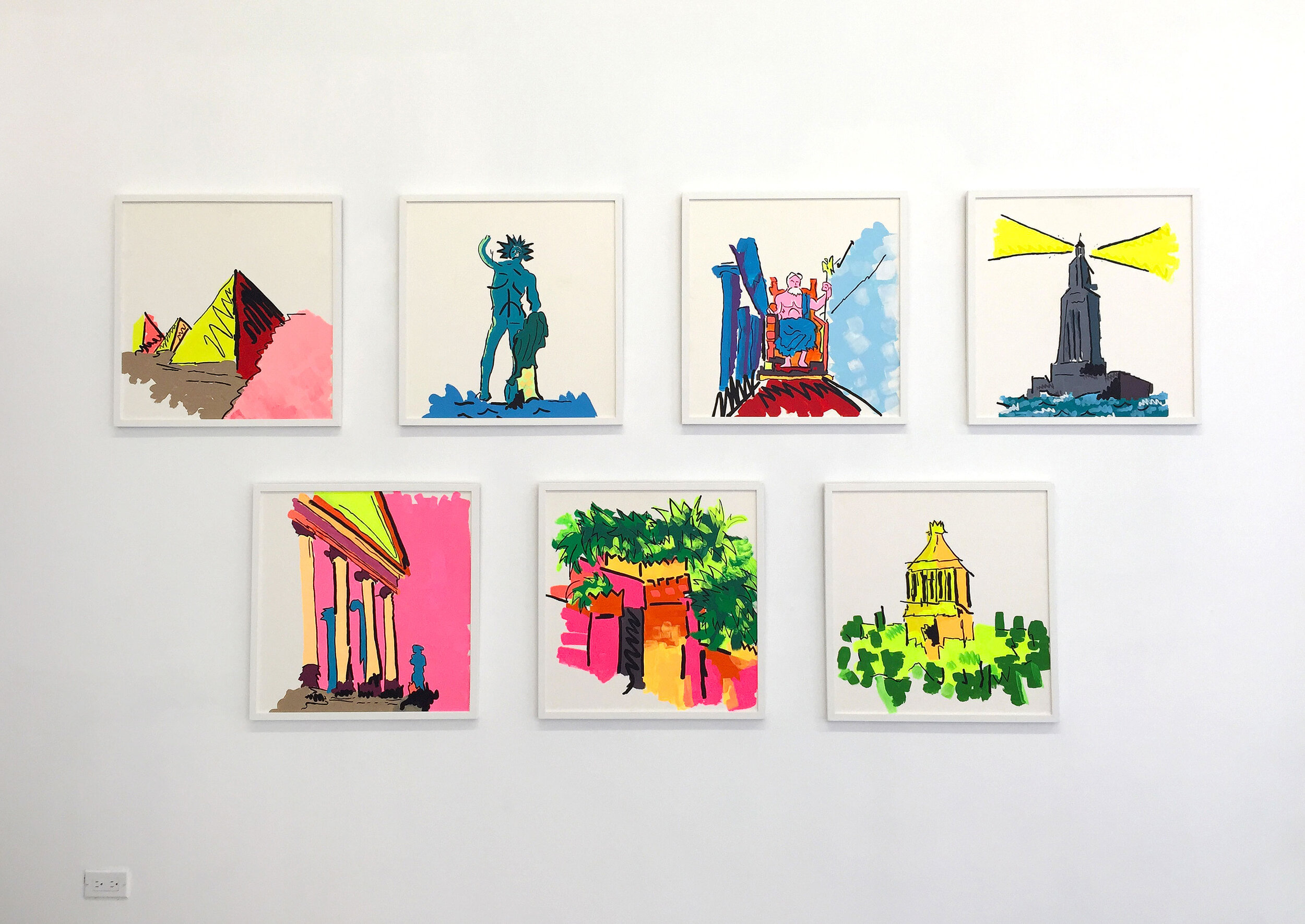









The Fourth Book by Michael Corris is a selection of incidents on a page. It is an artist’s book (an enduring model of expression) and a catalog for demand driven production (a patron’s handbook). Contents include: “Just Men” (A Visual Survey of the Birth of Satire), “Lit” & “Put Out” (Logo’s for American Dreams”), “Don’t Tread on me/ Unite or Die” (Flags of Convenience to Fly Alongside Your Cabin in the Sky), “Bronze, Lilac, Robin’s Egg, Marine, & Crimson” (A Racist Poet’s Image of a Diverse USA), “W. H. Auden’s ‘September 1, 1939 & Bertolt Brecht’s Encounter with the Poet Auden” (More Poetry?! More Theory Without Action?!), and “Index 01: Plumes”, Index 02: Flames” & Index 03: Ghosts” (Three Picture Archives). The book will be published by Free Museum of Dallas Press, 2018.
The works the main gallery will be based on original images found in the “The Fourth Book”. The title refers to the fact that this is the fourth book produced by Corris. He was inspired by his long-standing love of typography, graphic design, and illustration. The exhibition will include early works that provide a context from Corris’ enduring interest in satire, parody, and the space between graphic design and art.
The works on view in the book and the gallery will draw on a long tradition of social and political satire in visual art, illustration, and cartooning. Together they present a biting commentary on the exercise of power, gender inequality, cultural appropriation, and how an artist’s good intentions can sometimes lead to bad faith, and vice versa.
Through demand driven production, Corris offers the consumer of art the opportunity to become a patron of art. In most gallery exhibitions, the collector selects a work from the available stock, which is generally displayed on the walls as so many “prêt-à-porter” medium-sized dry goods. For this exhibition, the collector is encouraged to act more like a patron of art. In other words, an act of collaboration between collector and artist is necessary for the transformation into unique works of art of the images found in “The Fourth Book”. This collaboration becomes a conversation between two parties about the available aesthetic and conceptual resources that go into creation of a work of art.
